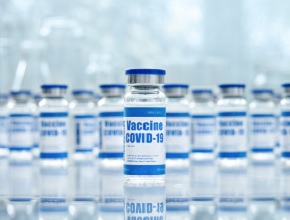Dr Zain Chagla, associate professor at the Faculty of Health Sciences at McMaster University, discusses the reports of thrombotic events following administration of the AstraZeneca vaccine against coronavirus disease 2019 (COVID-19).
For part 1 of the interview, click here.
Roman Jaeschke, MD, MSc: Good morning, welcome to another edition of McMaster Perspective [with] our star guest, Dr Zain Chagla, again. Last time we were talking about vaccination and now the question is really about the specific side effects that we start hearing about, which is some thrombotic phenomena after AstraZeneca [vaccine administration]. Could you tell us your take on it?
Zain Chagla, MD, MSc: Yeah. This was initially described as typical thrombosis after the vaccine, where the rate was thought to be unacceptably high in postmarketing data. When looking back at a typical venothromboembolic phenomenon, it really did seem like this [frequency] approached the general population, but when going through the data there were significant numbers of reports of predominantly young individuals with a combination of atypical thromboses—[cerebral] venous sinus thrombosis, intra-abdominal thrombosis—associated with thrombocytopenia and purpura as part of their presentation. Very different than what would be expected obviously with the typical thrombosis syndrome.
In some of the in vitro work, there are antibodies that are suggestive of a response similar to heparin-induced thrombocytopenia (HIT) syndrome. Slightly different in the context that it’s not exactly the same antiplatelet factor 4 antibody binding but certainly the same [in the] context of the thrombosis pathway to lead to the reaction of both thrombocytopenia and thrombosis. The syndrome now has been renamed into vaccine-induced prothrombotic immune thrombocytopenia (VIPIT). This is now being recognized, typically in 20- to 50-year-old women, in the 29 or 30 patients described in the German experience. Some of them have some underlying autoimmune diseases—not sure whether or not that’s attributable [to] or increases the risk in these small numbers. Some of them are on contraception—still not clear whether or not that’s a risk factor, predominantly given that each group has oral contraceptive use at baseline. Again, a significant mortality was associated with this and in the 9 individuals first described, 4 of them passed away as a consequence. This has really led to the particular remarketing of this vaccine away from that high-risk group of 20- to 50-year-olds.
Absolute incidence seems to be described at somewhere between 1 in 1,000,000 to 1 in 100,000 after vaccination. In that high-risk group, the numbers aren’t particularly clear, as the European Union hasn’t released what the incidence is in young women, particularly, getting the vaccine. Clinicians should watch for—kind of day 4 to day 20 post vaccination—thrombocytopenia, bleeding, bruising, unrelenting headache, signs of deep venous thrombosis (DVT) or pulmonary embolism (PE) [and/or] severe intra-abdominal pain and should be sending patients for D-dimers, a smear, complete blood count (CBC) looking for thrombocytopenia as well and—in the right clinical suspicion and the confirmation of thrombosis—for an assay for HIT syndrome. The assay is slightly modified as the confirmatory assay. The screen enzyme immunoassay (EIA) for the HIT syndrome should still be enough to at least screen positive, but then a secondary assay, which needs to be much more specific to this syndrome, needs to be done for confirmation. In the management… Sorry, you were about to say [something].
Roman Jaeschke: Is this a widely available test?
Zain Chagla: In Ontario at least, this would be linked to referral centers for hematology. In Hamilton we’re repurposing the assay to be able to [do] that, but there is, in Ontario at least, a hematologist available through CritiCall in the context of having someone available to walk through the algorithm and as well advise on therapeutics including direct oral anticoagulants (DOACs)—or non–vitamin K antagonist oral anticoagulants (NOACs)—as part of the treatment.
Roman Jaeschke: Correct me if I’m wrong, but we haven’t recorded a case yet in Ontario.
Zain Chagla: No, there’s not been a Canadian recorded case.
Roman Jaeschke: The practicality to advise people to watch something that hasn’t happened or happens in 1 in 500,000—I would question it. We may as well look for tuberculosis and meningococcal meningitis.
Zain Chagla: No, it’s fair enough. I think a part of the mortality may have been underrecognized though. And that is… one of the other parts is that, you know, we are giving [the] AstraZeneca [vaccine]. It is now restricted from what seems to be the highest-risk group epidemiologically linked to this. But again, [if you look for it, it’s] gonna show up somewhere.
Roman Jaeschke: Only women or men as well <50 years of age?
Zain Chagla: I believe there was 1 woman above the age of 50 and 1 man included in this study.
Roman Jaeschke: I understand. I’m debating whether there is a gender difference in terms of restrictions.
Zain Chagla: Oh, yes, there’s absolutely a gender difference. In the data that were released from the Paul-Ehrlich-Institut, 29 in 30 were women and 1 was a man, so there is likely a gender factor as part of this.
Roman Jaeschke: OK. Well, thank you very much. This is one of these evolving things. I really appreciate your expertise. Thank you.
Zain Chagla: No problem.
 English
English
 Español
Español
 українська
українська











